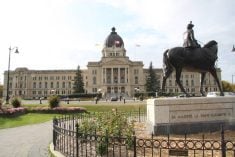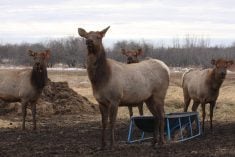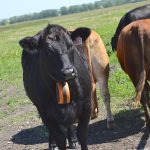A land developer from the waterlogged area around Lenore Lake says inaction by the Saskatchewan Watershed Authority is benefitting some landowners but costing others millions of dollars.
Joseph Bourgault, chair of the Lake Lenore Environmental Protection Committee, said unauthorized farmland drainage around Deadmoose Lake, Houghton Lake, Waldsea Lake and Lenore Lake has significantly contributed to flooding in the area.
Flooding has already affected almost 100 quarter sections of farmland around Houghton, Deadmoose and Waldsea and the number is expected to increase.
Rising water levels around those lakes are also creating problems further downstream around Lenore Lake, where agricultural land is being swallowed up and property owners near St. Brieux, Sask., are scrambling to keep flood waters out of their homes and cottages.
Read Also

Why feds imposed EV tariffs
Moe and Kinew have a fight on their hands when it comes to eliminating the EV tariff. Canada has to worry about pissing off the U.S. and Mexico and hundreds of thousands of auto workers.
At Middle Lake and Basin Lake, even further downstream, thousands of acres of pasture and farmland are either underwater or at risk of being flooded.
Bourgault said inaction by SWA over the past few decades has allowed some farmers to drain water off their land at the expense of their neighbours downstream.
“The solution is simple,” said Bourgault. “I don’t have the right to drain my water onto my neighbour. Enforce it that way, and then you have justice.”
For some farmers, the situation in the Lenore Lake drainage basin is critical.
Last week, Myles Kalthoff and his family watched in disbelief as a pair of track hoes hired by the SWA punched a hole through a man-made berm separating Deadmoose and Waldsea lakes, about 10 kilometres northwest of Humboldt, Sask.
The breach released flood waters from Deadmoose Lake into Waldsea and onto the Kalthoffs’ farm, where Myles’s grandfather homesteaded nearly 100 years ago.
The water level in Waldsea Lake will rise by five or six metres when all is said and done, and the Kalthoff family will lose eight more quarter sections of land, including some that is rented.
The family also lost 10 quarter sections last year.
The watershed authority is obligated to compensate the Kalthoff family for the loss of land and revenue but those negotiations were at a standstill as of last week.
“It’s all gone,” Kalthoff said as he watched the flood waters flow across his farm. “That’s land that’s been in the family for 100 years.”
The situation around Waldsea and throughout the Lenore Lake basin is a complex one.
Illegal wetland drainage is becoming an increasingly contentious issue as waters rise and losses mount.
The watershed authority has acknowledged that agricultural drainage contributed to flooding in the area.
An assessment it conducted in 2007 determined that drainage of wetlands around Deadmoose, Houghton and Waldsea lakes has increased the total collection area by 100 sq. kilometres.
Similar drainage is taking place east and west of Lenore Lake, where water levels this spring are projected to be as much as 2.67 metres above 2006 levels.
It’s hard to say how big a role agricultural drainage has played in the flooding, but property owners in the area are beginning to ask pointed questions.
“Who is actually responsible for enforcing (drainage provisions in) the Saskatchewan Watershed Authority Act?” asked Don Hawes, a St. Brieux, Sask., cabin owner who watched last year as water levels rose to his doorstep.
“I would assume that it has to be a provincial agency and yet (the provisions in the act) … have never been enforced in this whole area. Both upstream and downstream actions have never been enforced.”
Authority spokesperson Dale Hjertaas said farmers who move water from wetlands or low-lying areas are supposed to contact the authority before they dig ditches or channels.
The only farm drainage activities that do not require authority approval are those that consolidate sloughs, wetlands or standing bodies of water on the same property.
Any activity that transfers water from one landowner to another can be deemed illegal and the watershed authority can demand that it be reversed or corrected.
Hjertaas acknowledged that much of the agricultural drainage that takes place in the province does not receive authority approval.
However, the authority does not normally wade into the murky world of farm drainage unless a dispute emerges between landowners.
“Our issues come when you’re draining it over onto someone else’s land and causing them problems,” said Hjertaas.
“The bottom line is we have a limited capacity (to monitor and enforce), so if you dig a ditch and nobody complains, we’re unlikely to even be aware of it. There’s a lot of farmland and not a whole lot of staff (at the SWA).”















